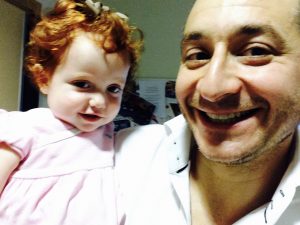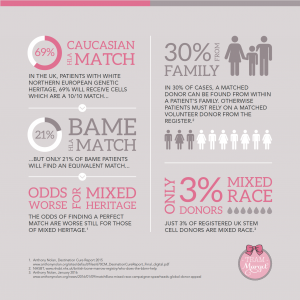 We set up Team Margot Foundation in January 2015, in memory of my daughter, Margot and to honour her legacy. A year earlier, Margot’s patient appeal for a bone marrow donor saw over 50,000 people in the UK alone requesting swab kits online, in order that they could join the register as potential donors. Margot’s appeal was covered by the media in thirteen countries and because Team Margot had built a following, we simply continued campaigning after Margot’s transplant, for the greater good.
We set up Team Margot Foundation in January 2015, in memory of my daughter, Margot and to honour her legacy. A year earlier, Margot’s patient appeal for a bone marrow donor saw over 50,000 people in the UK alone requesting swab kits online, in order that they could join the register as potential donors. Margot’s appeal was covered by the media in thirteen countries and because Team Margot had built a following, we simply continued campaigning after Margot’s transplant, for the greater good.
Margot’s mixed heritage was the key reason we were unable to find her ‘perfect match’ and we soon learned about the stark disparity between the 69% chance of a White Northern European blood cancer patient finding their 10/10 antigen match and the 21% chance of a Black, Asian or Minority Ethnic patient finding their equivalent match.
 It turns out that the odds are worse still if, like Margot, you’re mixed race.
It turns out that the odds are worse still if, like Margot, you’re mixed race.
This under-representation of Black, Asian, Mixed Race and Minority Ethnic (BAME) donors on the worldwide bone marrow / stem cell registers is also the prevalent issue when it comes to the need for more blood and organ donors too.
Our work has revealed that Margot’s story resonates with children of primary school ages and that young children are able to recall salient details remarkably well.
That’s why, in partnership with NHS Blood and Transplant, we created a tailored education programme for primary schools called ‘Giving to help others’, which starts with an assembly presentation.
We believe that tailored education and awareness for children of primary school ages (5-11) will ultimately result in two key outcomes:
We first trialled our assembly presentation ‘test of concept’ at the start of October 2017 and officially launched the programme and our initial findings later that month, working with the Education and Youth Team, at City Hall in London. The presentation materials, including powerpoint slides, teacher notes and short animated video are all available to use for free via givingtohelpothers.org
We recognise the need for our education and awareness programme to reach out to teachers, teaching staff and also parents and the wider school communities outside the classrooms, in addition to the children themselves.
During the course of the last few weeks, the ‘Giving to help others’ assembly presentation has been piloted in several primary schools within the London borough of Southwark. We have attended these assemblies, strictly as observers and are awaiting the analysis of the feedback forms received from 725 pupils and 22 teachers.
Thank you again to everyone involved. It’s a very fluid and iterative process, however I’m pleased to tell you that our learnings are already helping to inform next steps and how best to assess and encourage greater social impact, in order that more people sign up as potential stem cell donors, give blood and register as organ donors.
It took a loved one for me to change my own attitude and behaviour towards donation and I very much hope that others will embrace the culture and philosophy of ‘Giving to help others’, without first having to suffer their own family tragedy.
Team Margot
Together, saving lives
The Giving To Help Others assembly presentation is available to download for free via: givingtohelpothers.org
Husband to Vicki and father to Oscar (2007), Rufus (2008), Digby (2015), Humphrey (2017) & Margot (2012-2014)
Team Margot’s mission
To help save and improve lives by educating, inspiring and motivating people, especially from ethnically diverse communities, to register as blood, organ, stem cell and bone marrow donors and to provide a range of support to families caring for child cancer patients.
Team Margot also provides secretariat support to the All-Party Parliamentary Group for Ethnicity Transplantation and Transfusion.